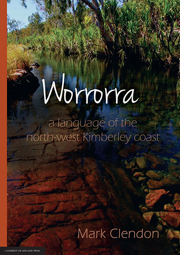Book contents
- Frontmatter
- Dedication
- Contents
- List of tables
- List of figures
- Abbreviations
- Acknowledgements
- Chapter One introduction
- Chapter Two segmental phonology
- Chapter Three morphophonology
- Chapter Four nouns and noun classes
- Chapter Five indicative mood and basic verbal morphology
- Chapter Six adjectives and inalienable nouns
- Chapter Seven pronouns, demonstratives, anaphors, deictics
- Chapter Eight optative, counterfactual and exercitive moods
- Chapter Nine number
- Chapter Ten adverbs and postpositional phrases
- Chapter Eleven complex predicates
- Chapter Twelve experiencer constructions
- Chapter Thirteen objects and possession
- Chapter Fourteen complement clauses
- Chapter Fifteen subjunctive verbs
- Chapter Sixteen middle voice
- Chapter Seventeen discourse cohesion
- Chapter Eighteen kinship terms
- Appendices
- References
Chapter One - introduction
Published online by Cambridge University Press: 05 October 2014
- Frontmatter
- Dedication
- Contents
- List of tables
- List of figures
- Abbreviations
- Acknowledgements
- Chapter One introduction
- Chapter Two segmental phonology
- Chapter Three morphophonology
- Chapter Four nouns and noun classes
- Chapter Five indicative mood and basic verbal morphology
- Chapter Six adjectives and inalienable nouns
- Chapter Seven pronouns, demonstratives, anaphors, deictics
- Chapter Eight optative, counterfactual and exercitive moods
- Chapter Nine number
- Chapter Ten adverbs and postpositional phrases
- Chapter Eleven complex predicates
- Chapter Twelve experiencer constructions
- Chapter Thirteen objects and possession
- Chapter Fourteen complement clauses
- Chapter Fifteen subjunctive verbs
- Chapter Sixteen middle voice
- Chapter Seventeen discourse cohesion
- Chapter Eighteen kinship terms
- Appendices
- References
Summary
The core reference of the word Worrorra (/Wrrorra/) is linguistic, being applied traditionally to the language spoken as a first language by about a dozen related extended families in Australia's north-west Kimberley region. The extended reference of the word, however, was applied as well to the people, the land and the culture of those families. At the time of sustained European contact (1912) there were an estimated 300 people who spoke Worrorra as their first language, and probably at least twice that number again who spoke it as a second language.
The language described here is that attested by Patsy Lulpunda (phonemic /lalbanda/), Daisy Utemorrah and Amy Peters, all now deceased, at Mowanjum near Derby in Western Australia. The study was undertaken initially at the request of their niece Heather Umbagai, and the original project was funded by the Kimberley Language Resource Centre at Halls Creek.
Worrorra people moved out of their traditional lands to Mowanjum in 1956, and today live mostly at Mowanjum and Derby, while some live on Mount Barnett station and at Kalumburu. Since 1956 Worrorra people have lived at Mowanjum in close daily contact with people who spoke either Ungarinyin or Wunambal as their first language, and by the 1970s Ungarinyin had become the lingua franca there.
- Type
- Chapter
- Information
- WorrorraALanguage of the North-West Kimberley Coast, pp. 1 - 20Publisher: The University of Adelaide PressPrint publication year: 2014



